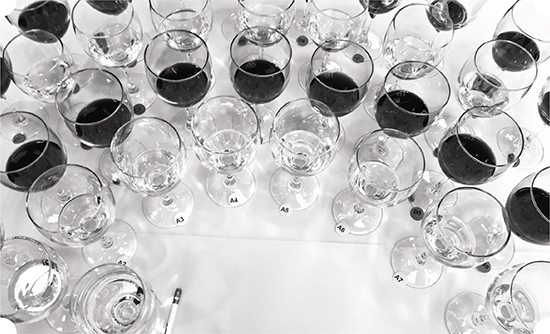
If you crave instant and unconditional gastronomic credibility—the kind of admiration normally reserved for lionized chefs—follow my lead. When a waiter presents you with the first taste of wine, swirl and sniff it, but refrain from sipping it, which is usually done to see if the wine is fresh or spoiled.
You can do this because most of taste is in fact smell. While the nose has the sensitivity to detect innumerable smells, our sense of taste is much more constrained, largely limited to a handful of flavors. As olfactory expert and author Rachel Herz has written, “Flavor is simply an aroma you can eat.” So virtually everything you need to know to tell if a wine has spoiled—especially the wet newspaper aroma of cork taint or the Sherry-like or nutty aroma of oxidation (chapter 71)—comes from the preview you get from sniffing the wine. Taste, conversely, isn’t as revealing and sometimes can mislead the mouth that hasn’t yet adjusted to wine.
Savvy sommeliers are aware of the primacy of the sniff, so nosing the wine without sipping it will give them the impression that you are as much of a boss as the bearded Dos Equis man or his female equivalent. Your technique will also amuse your dining companions and give you an opportunity to gently inform them of the power of the olfactory sense in wine appreciation.